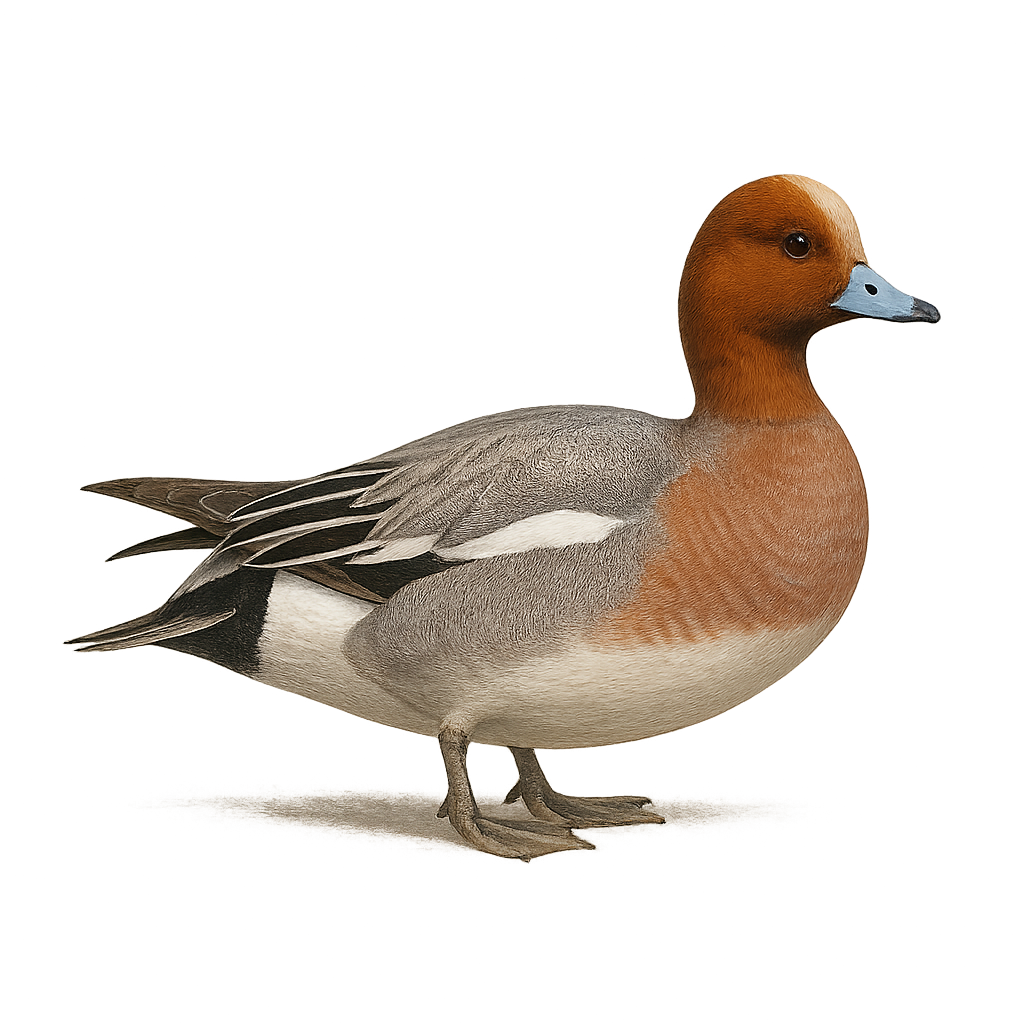Observe and photograph a species in its natural habitat
Learn where and when to observe a species in the wild, how to recognize it in the field, and what habitats it lives in. Get photography tips adapted to its behavior and capture stunning images without disturbing the animal. For full details, open the complete profile in the WildlifePhotographer app.
Eurasian wigeon
Scientific name: Mareca penelope

IUCN Status: Least Concern
Family: ANATIDAE
Group: Birds
Shyness: Suspicious
Safe distance: 30 m
Breeding season / Courtship: 01.11-31.12
Gestation: N/A
Births: 01.05-30.06
Habitat:
Wetlands, lakes, ponds, rivers, and marshes of Europe and Asia, mainly in temperate regions
Description:
The Eurasian Wigeon is an elegant waterfowl, easily recognizable by its distinctive plumage and characteristic whistle. The male, during the breeding season, has colorful plumage with a dark green head, light brown body, and a white stripe running across its neck. The female is more subdued, with speckled brown plumage, adapted for camouflage. This duck gets its name from the whistling sound it makes during its movements and social interactions.
The Eurasian Wigeon primarily inhabits wetlands, such as lakes, ponds, and marshes, where it feeds on aquatic plants, seeds, and insects. It is a long-distance migratory bird, leaving its breeding grounds in Europe to travel to warmer regions in Africa or the Middle East during the winter. While its population remains generally stable, it faces threats related to habitat loss and water pollution.
Recommended lens:
>=300 mm
Photography tips:
To photograph the Northern shoveler, a telephoto lens is perfect for capturing its behavior on the water or when it moves in groups. The best photos can be taken early in the morning or at dusk, when the light is soft. Be discreet and respect their space, especially during the breeding season, to avoid disturbing their natural behavior.
Ready to take action?
Choose your platform and start your free trial today



